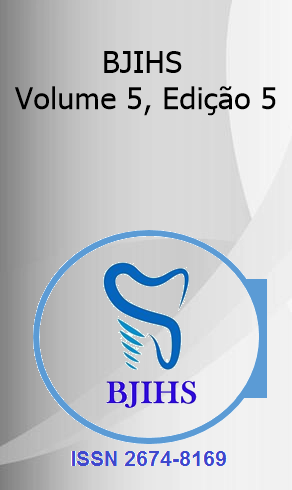Abstract
Neuropathic pain poses a significant challenge in clinical practice due to its complexity and impact on patients' quality of life. In this context, various pharmacological therapies have been explored as strategies to alleviate symptoms associated with this condition. The present integrative analysis aims to examine and consolidate the available scientific evidence on pharmacological therapies used in the treatment of neuropathic pain, providing a comprehensive overview of the current therapeutic landscape.
Among the pharmacological approaches, research on histone deacetylase inhibitors (HDACs) and bromodomain 4 inhibitors (BRD4) stands out, highlighting their promising efficacy in relieving neuropathic pain by modulating the inflammatory response in microglial cells. Additionally, the analysis also encompasses recent advances in the use of agents that interfere with the renin-angiotensin system to prevent chemotherapy-induced peripheral neuropathy, underscoring the importance of these innovative interventions in managing neuropathic pain associated with oncological treatments.
A deeper understanding of pharmacological strategies for neuropathic pain, spanning from molecular mechanisms to clinical outcomes, provides valuable insights for healthcare professionals in choosing personalized therapeutic approaches. This integrative analysis seeks to contribute to the development of more effective and comprehensive approaches to address this challenging condition, emphasizing the crucial role of pharmacological therapies in managing neuropathic pain and their potential positive impacts on patients' quality of life.
References
BACH, Flemming Winther et al. Oral capsules of tetra-hydro-cannabinol (THC), cannabidiol (CBD) and their combination in peripheral neuropathic pain treatment. Eur J Pain. 2023;27:492–506.
BING, Yang et al. Higenamine Attenuates Neuropathic Pain by Inhibition of NOX2/ROS/TRP/P38 Mitogen-Activated Protein Kinase/NF-ĸB Signaling Pathway. Frontiers in Pharmacology, 2021, v. 12, Article 716684.
FRACHET, Simon et al. Renin-Angiotensin-System Inhibitors for the Prevention of Chemotherapy-Induced Peripheral Neuropathy: OncoToxSRA, a Preliminary Cohort Study. J. Clin. Med., 2022, v. 11, p. 2939.
KOURI, Maria et al. Pharmacological Management of Neuropathic Pain after Radiotherapy in Head and Neck Cancer Patients: A Systematic Review. J. Clin. Med., 2022, v. 11, p. 4877.
LIAMPAS, Andreas et al. Pharmacological Management of Painful Peripheral Neuropathies: A Systematic Review. Pain Ther, 2021, v. 10, p. 55-68.
MAIYA, G Arun et al. Effect of novel Matrix Rhythm Therapy (MaRhyThe®) on neuropathic pain and maximum plantar pressure distribution among type 2 diabetes mellitus patients with peripheral neuropathy. Journal of Diabetes & Metabolic Disorders (2023) 22:827–833.
SERRANO, Ancor et al. Off-label pharmacological treatment for neuropathic pain: A Delphi study by the Spanish Pain Society Neuropathic Pain Task Force. Pain Practice, 2023, v. 23, p. 167-179.
THOUAYE, Maxime; YALCIN, Ipek. Neuropathic pain: From actual pharmacological treatments to new therapeutic horizons. Pharmacology & Therapeutics, 2023, v. 251, p. 108546.
WU, Dan et al. Levo-tetrahydropalmatine ameliorates neuropathic pain by inhibiting the activation of the Clec7a-MAPK/NF-κB-NLRP3 inflammasome axis. Phytomedicine, 2023, v. 121, p. 155075.
YANG, Bing et al. Dual HDAC/BRD4 Inhibitors Relieve Neuropathic Pain by Attenuating Inflammatory Response in Microglia After Spared Nerve Injury. Neurotherapeutics, 2022, v. 19, p. 1634-1648.

This work is licensed under a Creative Commons Attribution 4.0 International License.
Copyright (c) 2023 Bheatriz Simões Montefuscolo, Débora Leão França , Isabella Cavaco Gonçalves Pereira, Amanda Augusta Polachini da Silva, José Victor Barrancos Barbosa Mello
